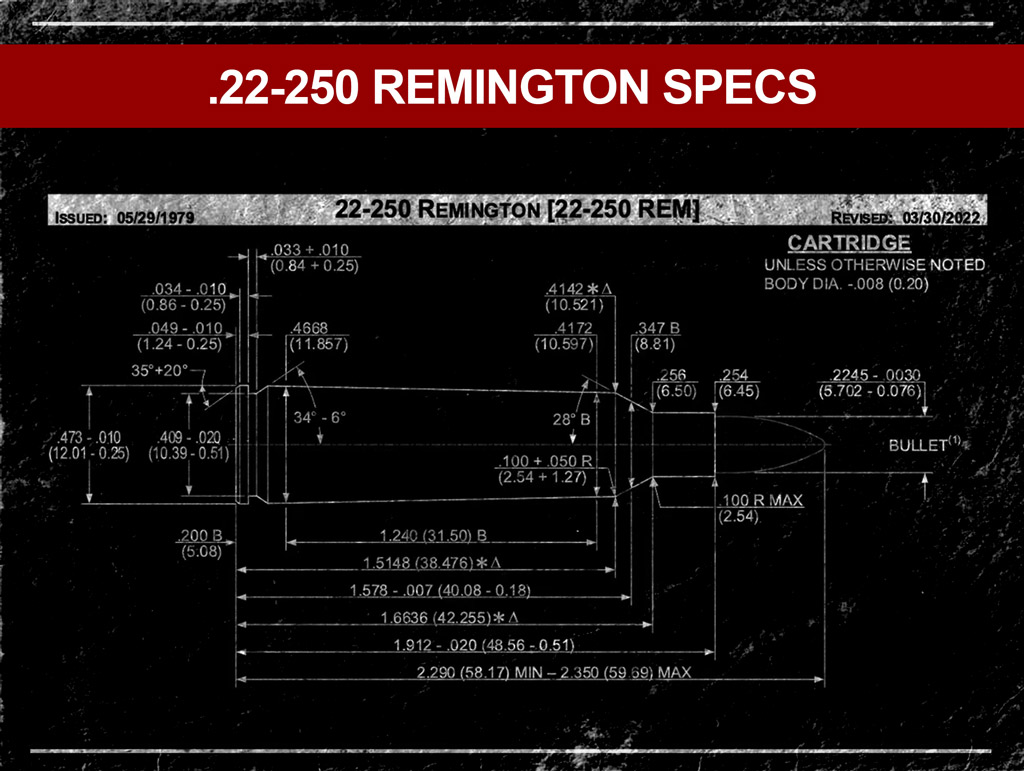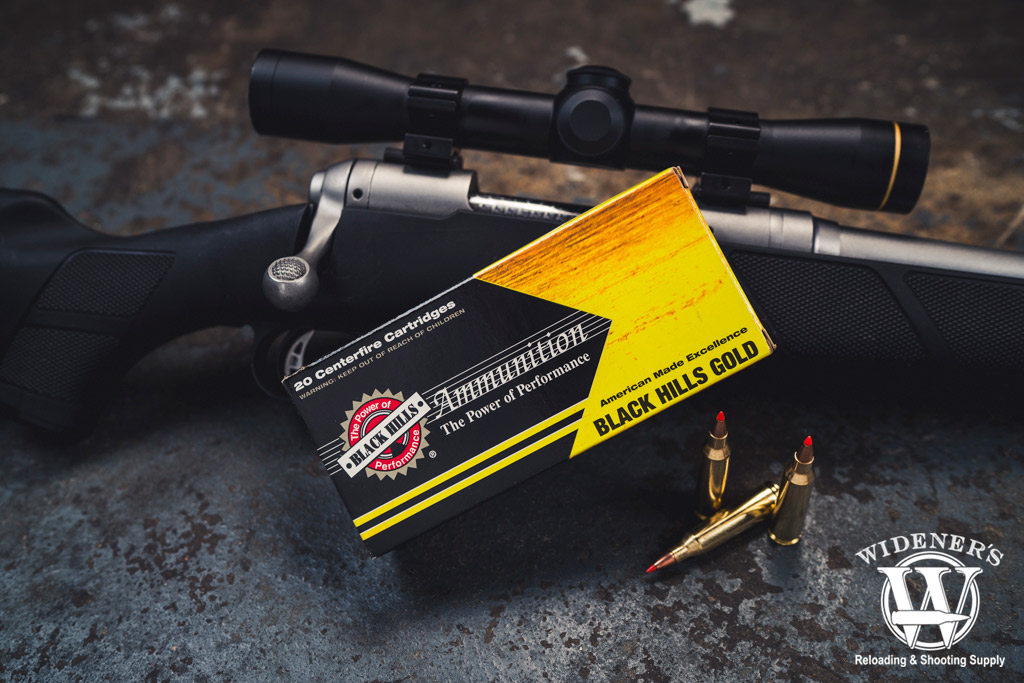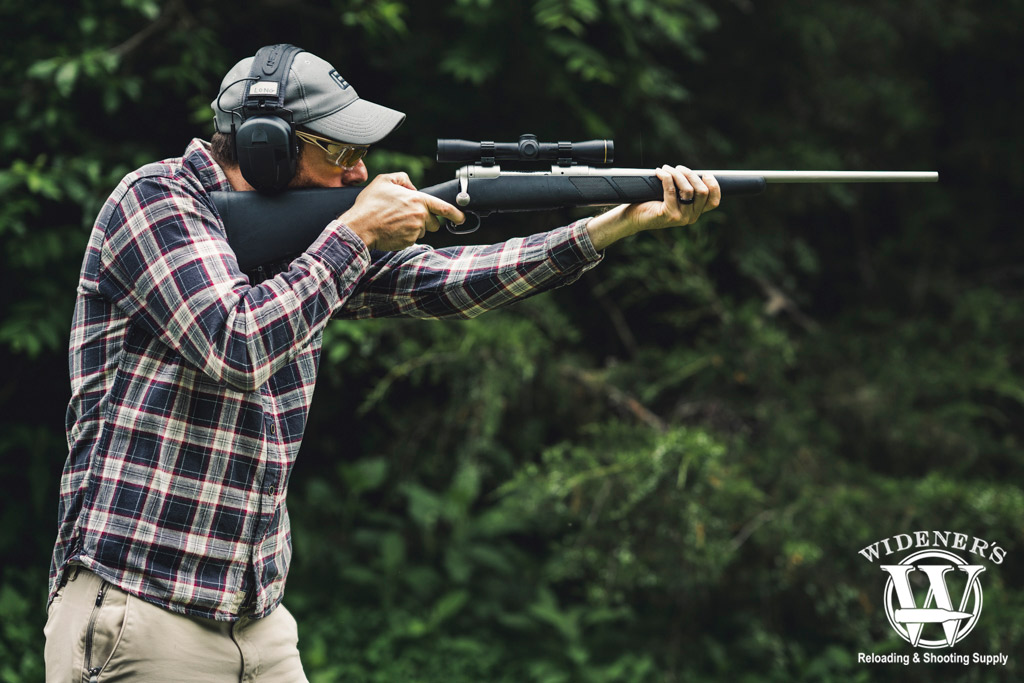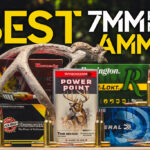
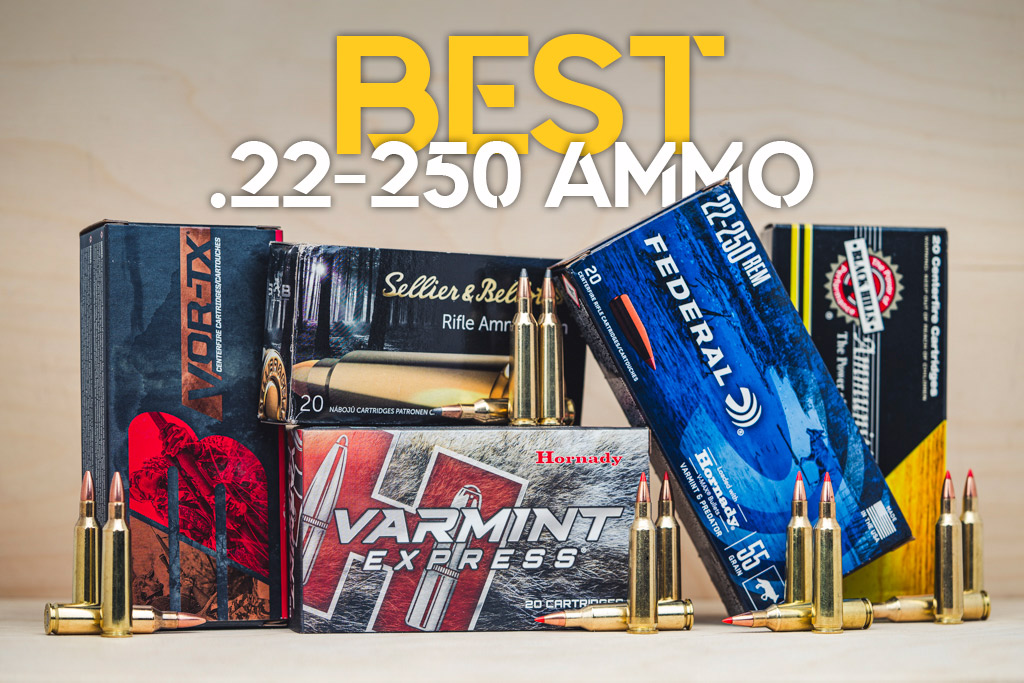
Are you thinking about adding some 22-250 to your arsenal? If so, you may be wondering what the best 22-250 ammo is for the job. This caliber is excellent for varmints like foxes, coyotes, prairie dogs, and rats.
The 22-250 Remington, or 5.7x48mm cartridge, has been around for nearly 80 years. It stands out amidst the hype surrounding the .17 HMR and the long-standing popularity of 22 long rifle. While I appreciate both of these cartridges, the 22-250 holds a unique position in the shooting community.
Besides, it isn’t comparable to the .22R or .17HMR, despite having the “22” in its name. In fact, the 22-250 is more akin to the .223 than those tiny cartridges I just mentioned. Here’s everything you need to know about it.
Best 22-250 Ammo On the Market
Now that we’ve covered the basics, let’s get into my picks for the best 22-250 ammo. We’ll also discuss various uses, including plinking, varmints, and hunting.
Best 22-250 Ammo: Plinking
Sellier & Bellot 22-250
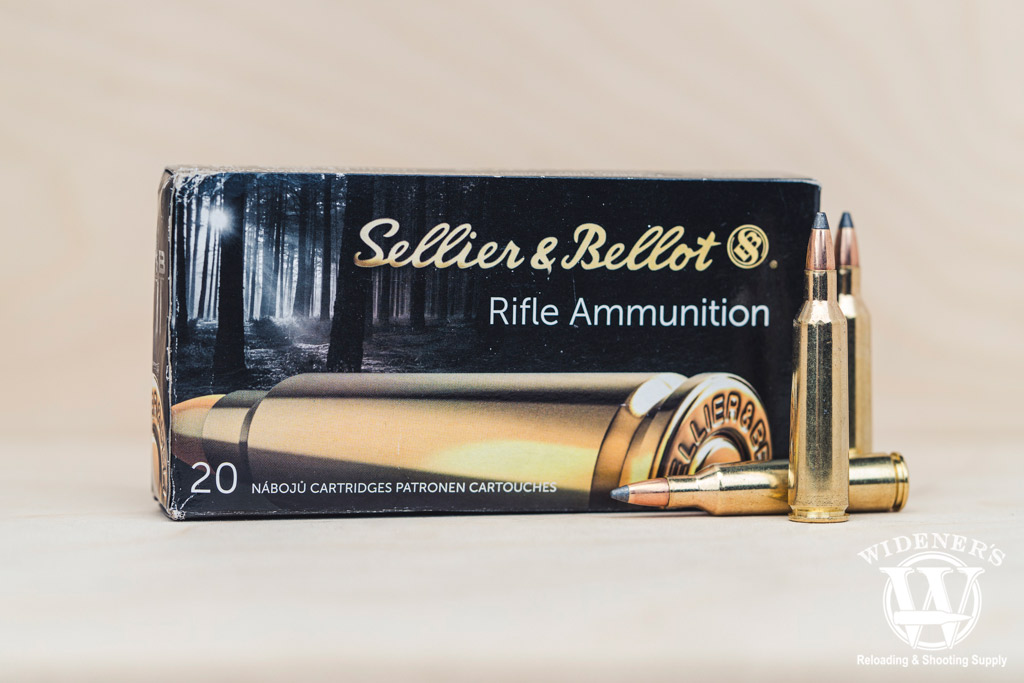
Sellier & Bellot’s 55-grain SP (soft point) is a good pick for an economical do-it-all round.
These 55-grain soft-point projectiles are designed for varmint hunting, but are so affordable you can use them for plinking, too. They have real brass casings, a bare lead core, and a semi-jacketed design. The casings are reloadable, and the target deforms nicely when hitting soft targets.
The Sellier & Bellot 22-250 rounds produce 1,166 foot-pounds of muzzle energy and leave the barrel at 3,091 feet per second. The ammo offers minimal bullet drop and a flat flight path while shooting clean. If you need something a little faster, you can always go for their FMJ option.
| Caliber | Bullet Type | Bullet Weight | Velocity (Muzzle) | Energy (Muzzle) | 100 Yards (Velocity/Energy) | 200 Yards (Velocity/Energy) | 300 Yards (Velocity/Energy) |
|---|---|---|---|---|---|---|---|
| .22-250 Rem | SP | 55gr | 3,107 FPS | 1,179 FT LBS | 2,739 FPS/916 FT LBS | 2,399 FPS/703 FT LBS | 2,084 FPS/531 FT LBS |


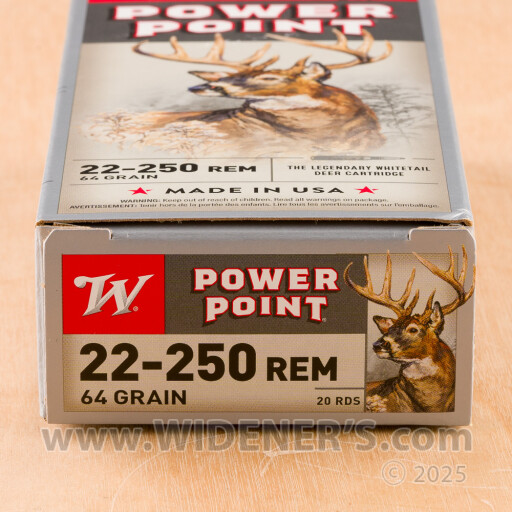
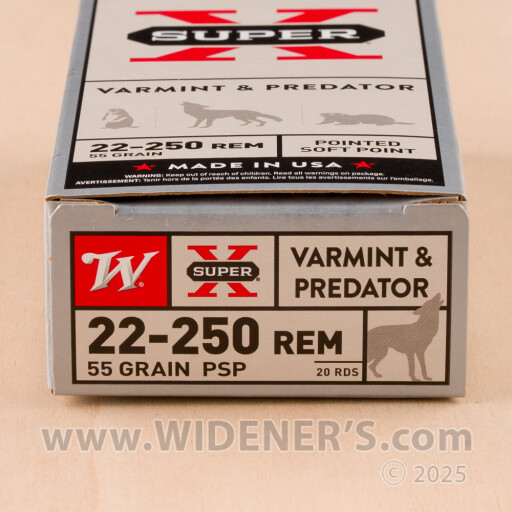
Best 22-250 Ammo: Varmints
Federal Varmint & Predator V-Max 55gr

From prairie dogs to coyotes, Federal’s Varmint & Predator line offers precision accuracy with explosive expansion.
If you are tired of coyotes, prairie dogs, or other nuisance animals encroaching on your property, I suggest the Federal Varmint & Predator cartridge. This 55-grain projectile has a Hornady V-Max bullet, which provides consistent expansion and causes catastrophic damage. This cartridge truly is a destructive force.
The cartridge provides the reliability and attention to detail that Federal is known for. The brass casings are reloadable, too.
In terms of performance, these cartridges leave the muzzle at 3,670fps and produce 1,645 foot-pounds of energy. When zeroed at 200 yards, they exhibit a drop of 5.2” at 300 yards.
| Caliber | Bullet Type | Bullet Weight | Velocity (Muzzle) | Energy (Muzzle) | 100 Yards (Velocity/Energy) | 200 Yards (Velocity/Energy) | 300 Yards (Velocity/Energy) |
|---|---|---|---|---|---|---|---|
| .22-250 Rem | Poly | 55gr | 3,670 FPS | 1,645 FT LBS | 3,244 FPS/1,285 FT LBS | 2,858 FPS/998 FT LBS | 2,504 FPS/766 FT LBS |

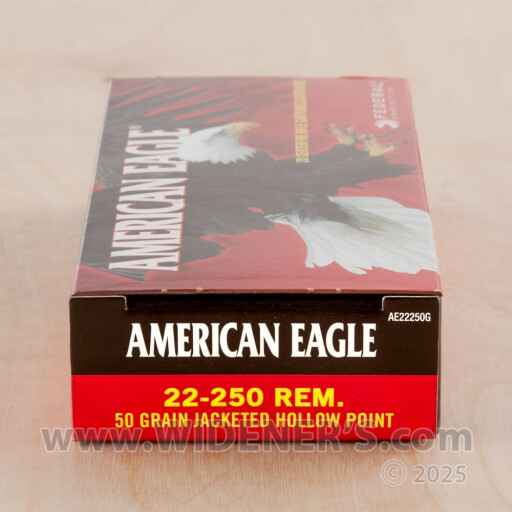
Hornady Varmint & Predator V-Max 55gr
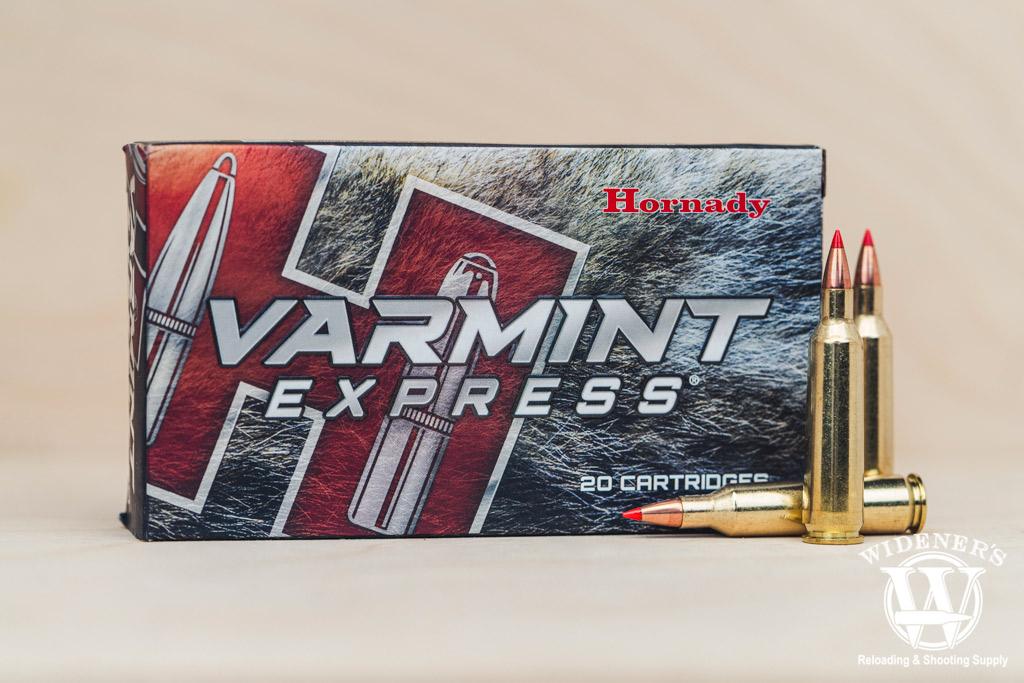
They’ll never see it coming. Hornady Varmint & Predator V-Max 55gr ammo delivers match accuracy with rapid fragmentation.
The 22-250 cartridge may not be regarded as a precision round, but Hornady’s 55gr V-Max round is. At a blistering 3,680 feet per second muzzle velocity, this round delivers exceptional accuracy and explosive expansion. The polymer-tipped V-MAX bullet boasts a high ballistic coefficient of 0.255, ensuring a flat trajectory and minimal wind drift, making it ideal for long-range engagements.
| Caliber | Bullet Type | Bullet Weight | Velocity (Muzzle) | Energy (Muzzle) | 100 Yards (Velocity/Energy) | 200 Yards (Velocity/Energy) | 300 Yards (Velocity/Energy) |
|---|---|---|---|---|---|---|---|
| .22-250 Rem | Poly | 55gr | 3,680 FPS | 1,654 FT LBS | 3,253 FPS/1,293 FT LBS | 2,868 FPS/1,004 FT LBS | 2,514 FPS/772 FT LBS |


Best 22-250 Ammo: Small Game Hunting
Barnes VOR-TX 50gr
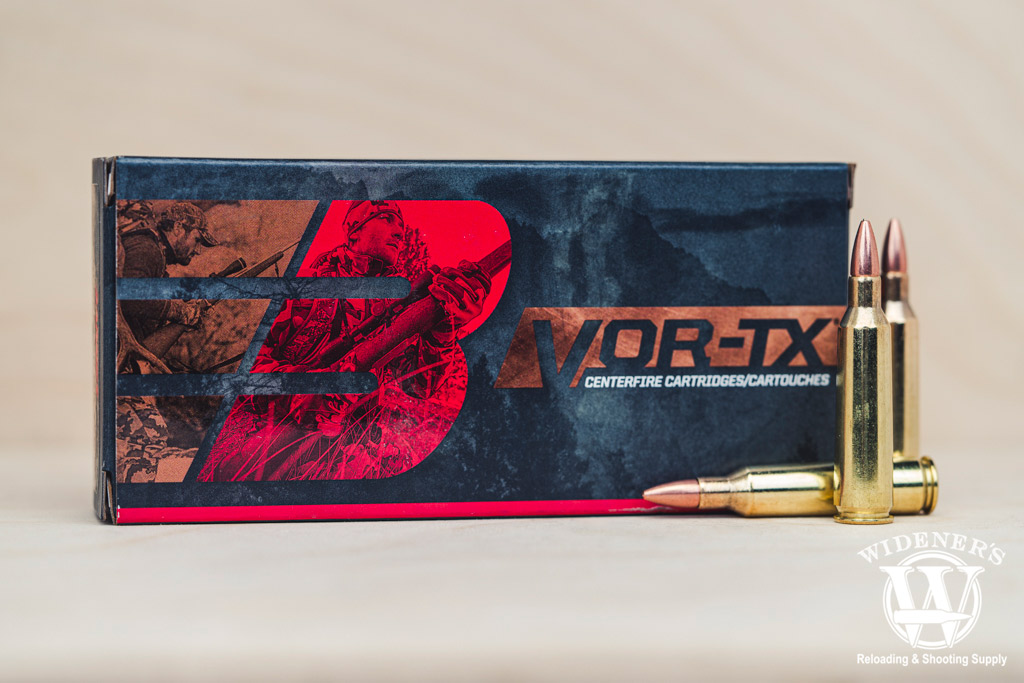
These all-copper projectiles deliver a devastating energy transfer, expanding to double their original diameter.
Barnes VOR-TX 50-grain bullets feature an all-copper projectile and devastating energy transfer. According to Barnes, the projectiles expand to double their original diameter, resulting in a considerable wound cavity.
These cartridges pack enough punch to take on small to mid-sized game, including deer. They deliver consistent performance and enough energy to put your target on the ground.
The VOR-TX leaves the muzzle at 3,820fps and maintains a velocity of over 2,300fps out to 300 yards. It produces 1629 foot-pounds of muzzle energy and has a very flat trajectory, dropping just 5.5” at 300 yards.
| Caliber | Bullet Type | Bullet Weight | Velocity (Muzzle) | Energy (Muzzle) | 100 Yards (Velocity/Energy) | 200 Yards (Velocity/Energy) | 300 Yards (Velocity/Energy) |
|---|---|---|---|---|---|---|---|
| .22-250 Rem | Poly | 50gr | 3,830 FPS | 1,629 FT LBS | 3,267 FPS/1,185 FT LBS | 2,711 FPS/853 FT LBS | 2,326 FPS/601 FT LBS |
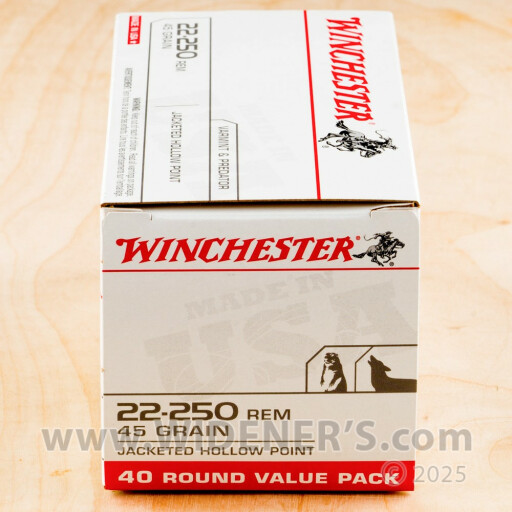





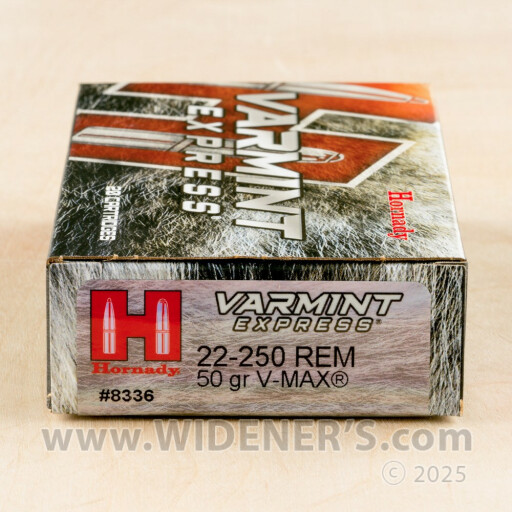
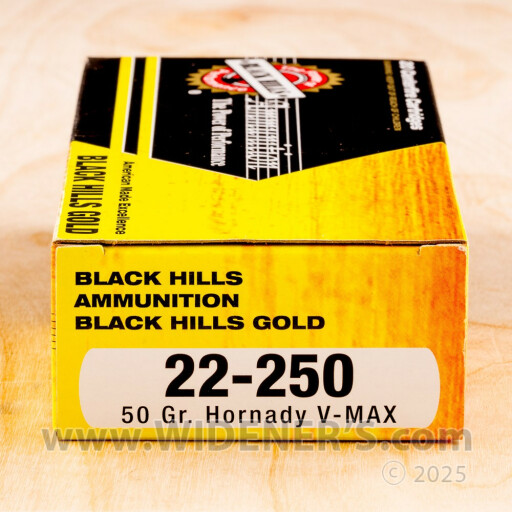
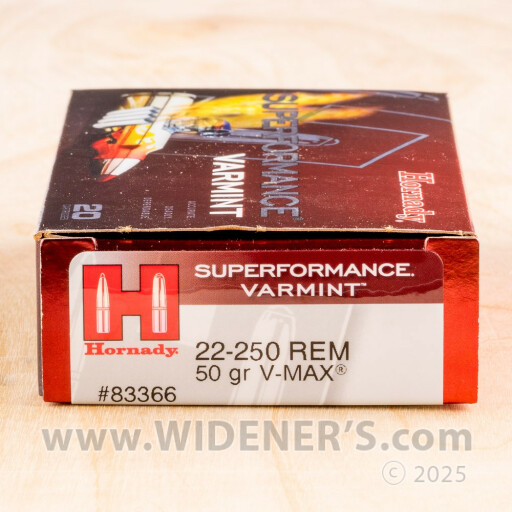

Black Hills V-Max 50gr
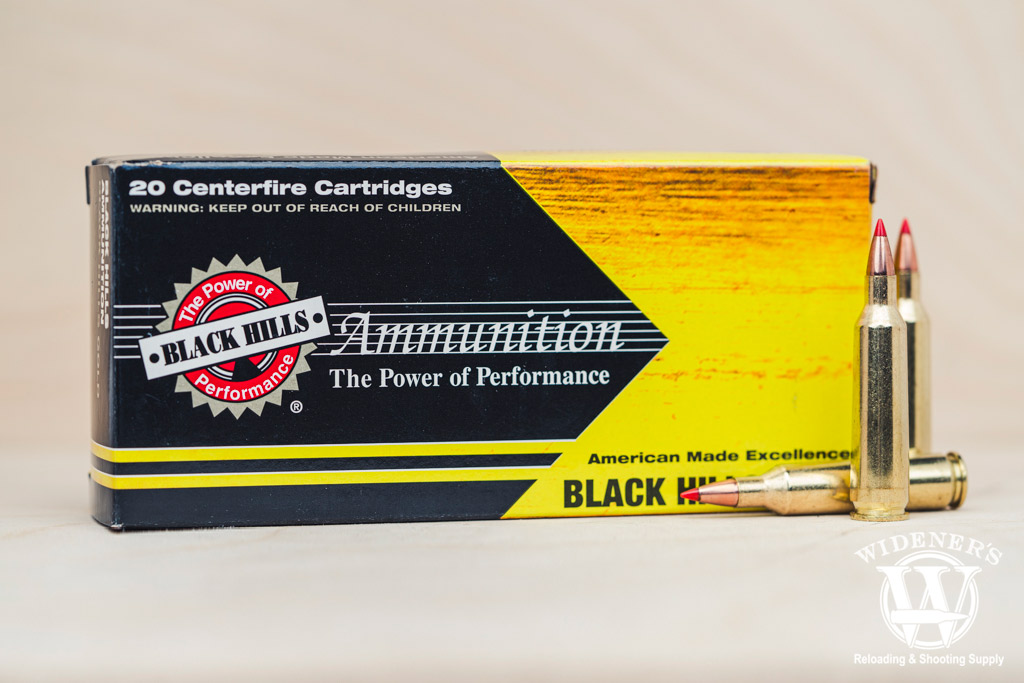
Powered by V-Max bullets, Black Hills ammunition is accurate and dependable, delivering sub-MOA performance to users.
| Caliber | Bullet Type | Bullet Weight | Velocity (Muzzle) | Energy (Muzzle) | 100 Yards (Velocity/Energy) | 200 Yards (Velocity/Energy) | 300 Yards (Velocity/Energy) |
|---|---|---|---|---|---|---|---|
| .22-250 Rem | Poly | 50gr | 3,700 FPS | 1,520 FT LBS | 3,250 FPS/1,173 FT LBS | 2,865 FPS/911 FT LBS | 2,521 FPS/706 FT LBS |










Cartridge Specs & Overview
The case itself is one of the most important specifications about the 22-250. As soon as you see a 22-250 cartridge next to a .22 LR, you’ll realize that the two don’t have much in common besides the .22-caliber projectile. That’s where the similarities end.
The 22-250 has an average rimless bottleneck case of about 1.9 inches. For comparison, the .22LR is just 0.613 inches. The pressure is another huge difference, with most 22-250 cartridges generating around 50,000 PSI. 22 LRs produce about half of that. The 22-250 is a centerfire cartridge, whereas the .22LR is a rimfire.
| Cartridge Specs | .22-250 |
|---|---|
| Parent Casing | .250-3000 Savage |
| Bullet Diameter | .224″ |
| Neck Diameter | .254″ |
| Base Diameter | .470″ |
| Case Length | 1.912″ |
| Overall Length | 2.35″ |
| Grain Weight | 40gr-64gr |
| Max Pressure (SAMMI) | 65,000 PSI |
Many 22-250 rifles have a 1:14” twist rate, which is designed for lighter bullets (Generally around 40 grains). You can also find 22-250 rifle barrels with a 1:12” twist rate and a 1:9” twist rate. The 1:12” twist rate offers a happy medium, making it a good option if you want to shoot mid-weight cartridges (like the ones that made our list).
The 1:9” twist rate is ideal for shooting heavier bullets. For context, the heaviest 22-250 bullets are usually between 65-74 grains, although some oddities exist. For most people, medium-weight bullets and the middle-of-the-road twist rate will offer the best mix of performance.
223 VS 22-250
Contrary to what its name might suggest, the 22-250 is more comparable to the .223 than the .22LR. In fact, it often outperforms America’s most popular rifle cartridge. It offers superior accuracy, a flatter trajectory, and impressive speed.
However, there are some caveats there. For starters, most 22-250 rifles have 1:14 twist barrels, so you won’t be able to use the heavier bullets. If you want to match (or outpace) the .223, you’ll need a barrel with a 1:12 or 1:9 twist. With the latter, you can fire bullets equal to your average .223 projectile.
You should also consider your intention. Think of it this way– the 22-250 will blast through most targets and perform better at distances exceeding 300 yards. However, will you really be shooting at anything that far out? For most people, the answer is, “Probably not.”
If you just want to send varmints into the afterlife, the 22-250 is an excellent choice. On the flip side, if you want an easy-to-find cartridge that won’t ruin the hide of your target, you might want to go with the .223.
22 Creedmoor vs 22-250
Another interesting comparison is the 22 Creedmoor vs 22-250 Remington. The 22-250 has been a go-to option for varmint hunters for decades. It offers higher muzzle velocities than its .22 caliber cousin. This allows it to reach great distances quickly, while retaining a good amount of its energy when impacting targets. However, this performance comes at a cost, with its lightweight bullet being susceptible to environmental conditions.
On the other hand, the 22 Creedmoor offers a flatter trajectory, with more stability at distance, making it a better option for precision shooting. Based on the 6.5mm Creedmoor, a more modern rifle cartridge, the 22 Creedmoor can handle heavier grain bullets and take down larger game. It does have more felt recoil, but rewards shooters with performance improvements in bullet drop and wind drift.
Pros & Cons of the 22-250
Disclaimer: I love the 22-250 cartridge, as I frequently deal with coyotes and appreciate how well this round fits the role of varmint slayer. That said, it’s essential to consider the good and bad of any cartridge before you add it to your arsenal.
Pros
The speed and overall trajectory are the best things about the 22-250. The cartridge shoots exceptionally flat, and the mid-sized and heavy rounds provide great accuracy of up to 500 yards.
The 22-250 is also highly affordable. A box of practice ammo costs under $20, and the hunting rounds are under $2 a piece, which is pretty good based on today’s prices.
Since the 22-250 isn’t as trendy as the .223, the ammo is also easier to find. Every time there is an uptick in ammo purchases, .223 cartridges get scarce, but most gun stores will have a healthy stock of 22-250 on hand.
I also appreciate the variety that the 22-250 offers. Depending on your shooting goals, you can get rifles with different twist rates.
Cons
A few things stand out when considering what I don’t like about the 22-250. First, most rifles have a barrel with a 1:14 twist rate, which means you won’t be able to take advantage of the heavier bullet options. Unfortunately, most rifles with a faster twist rate are also more costly.
The other downside is that while the cartridges can take down most small- to mid-sized games, they tend to do a lot of damage. Again, this issue is all about perspective. I hunt to fill the freezer and am not much for keeping trophies. If that’s part of your process, you may want to choose a more modest round.
The History of the 22-250
The 22-250, a product of the 1930s, was born out of the ingenuity of a few firearms enthusiasts who decided to experiment with the 22 caliber projectile. Their creation, a unique blend of a .250 Savage case and a .22 caliber bullet, was the original 22-250, also known as the “.22 Varminter,” which broke the 4,000 fps barrier.
Eventually, Remington added its name to the cartridge in 1965 and began offering Model 700 rifles chambered in .22 Varminter. Around this time, it was renamed the 22-250. While the current name is more accurate, .22 Varminter has a nice ring.
The cartridge was a massive hit with varmint hunters throughout the mid to late 1990s. Today, it remains one of the best (and fastest) varmint cartridges in production. It’s also incredibly cheap.
The Bottom Line
The 22-250 is a versatile round that is great for plinking, hunting, and eradicating pests. The cartridge remains incredibly affordable, and rifles aren’t too hard to track down. If you need an effective tool for dealing with rats, coyotes, and everything in between, the 22-250 deserves a place in your gun safe. With proven options from Federal, Hornady, Barnes, and Black Hills, you’re sure to find the right round for your rifle.


